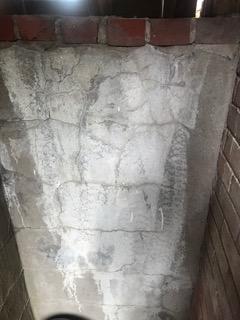I would like to refinish an old wall of previously finished CMU blocks and bricks. See these pictures:
(full-size images also available at https://www.dropbox.com/sh/ryr4m5adx6cd22c/AADFZKSiNORkaFE8bO6gDscoa?dl=0)
The wall is original (from 1939) it doesn't appear to be sagging and the cracks are probably just on the surface. The finish layer has cracked, among other things, possibly due to water leaking from within the wall.
As you see in the picture, there are a few other things going on:
- a layer or two of bricks at the top
- a section of concrete that was done more recently (strong, reinforced with rebars)
- an area of concrete to fill a whole underneath the above concrete, also done more recently
- 1/2 inch holes at the very bottom of this wall to release the water that may be within the wall, also done recently
In general, I have no concerns with this wall other than the aesthetics.
I recently learned about the properties of surface bonding cement. For example: https://www.homedepot.com/p/SAKRETE-50-lb-Surface-Bonding-Cement-in-Gray-65300845/100321221
It has fibers in it and allows you to build walls out of CMU blocks without using mortar.
I am thinking of applying a layer of surface bonding cement on top of all of what I have at the moment (including the bricks, the concrete, the cracked layer) without removing any of it. Is it a good idea? I don't see much discussion about surface bonding cement on the internet.
What I see regarding bonding, however, is advice like this: https://www.swimmingpoolsteve.com/pages/bond-concrete.html which, in a nutshell, is:
- Remove grease and oils
- Acid wash
- Rinse and neutralize the concrete
- Apply a bonding slurry
- Apply the new concrete layer
Seems like solid advice. Is this advise compatible with surface bonding cement? That is, does it make sense to do 1 through 4 above before applying surface bonding cement? Or is that not needed when using surface bonding cement (as opposed to concrete which is what the advice is about).
Or what is the best advice in general for my situation?






